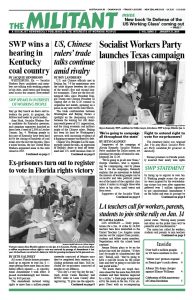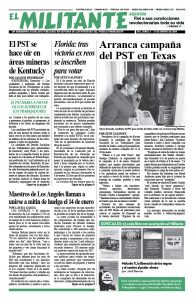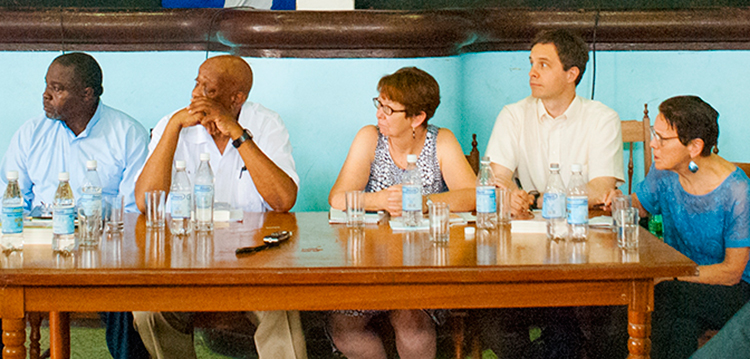In Defense of the US Working Class, a new book by Mary-Alice Waters, is being released in January.
It features the talk by Waters at an international conference in Havana organized by the Cuban History Institute and the Central Organization of Cuban Workers (CTC), the country’s union federation. The April 24-26 gathering was part of the May Day events in 2018, including the May 1 marches of more than a million working people who mobilized in Havana and across Cuba to support their socialist revolution.
Waters is a member of the Socialist Workers Party National Committee and president of Pathfinder Press, publisher of the book. Her talk was first printed in the June 11 issue of the Militant. She has edited her presentation for publication in the new book.
Waters’ talk was followed by a panel on the US class struggle titled, “From Clinton to Trump: How US working people are responding to the antilabor offensive of the bosses, their parties and their government.”
As Pathfinder editor Martín Koppel explains in the preface, the members of the panel “were leaders and supporters of the Socialist Workers Party with years of experience in major industries and trade unions as well as on the land. They described the many intertwined forms of capitalist exploitation and oppression faced by working people in capitalist America.”
More important, Koppel says, the panelists “explained how workers have fought back against [the] forty-year offensive by the employers and their government. They pointed especially to the teachers strike in West Virginia and the impetus it gave to a wave of strikes and protests by school personnel in the spring of 2018 that swept Oklahoma, Kentucky, Arizona, and other states.”
In Defense of the US Working Class includes political summaries of those remarks, as well as short biographies of the panelists. Over the next three weeks, the Militant will run all six summaries.
The book concludes with the text of a Radio Havana Cuba broadcast, first run in the Militant in 1981, describing the fighting history of coal miners and the United Mine Workers of America.
This week we feature the panel presentations by Alyson Kennedy and Omari Musa.
Copyright © 2019 by Pathfinder Press. Reprinted by permission.
❖
ALYSON KENNEDY. Alyson is a 14-year veteran union coal miner. She was among the first wave of women who in the 1970s and ’80s broke through the barriers that coal bosses used to exclude them from underground mining jobs. She has been part of United Mine Workers battles in coal fields from West Virginia and Alabama to Utah. Alyson was the Socialist Workers Party candidate for president in 2016 and lives in Dallas, Texas, where she works at the international retail chain Walmart.
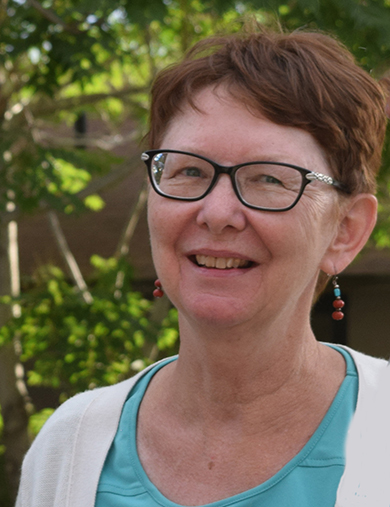
At the Havana conference, Kennedy highlighted some of the fighting history of the United Mine Workers of America (UMWA) including the successful struggle waged by the rank-and-file Miners for Democracy movement in the 1970s to win control of the union. The new union leadership then established the right of the ranks to vote on contracts. The strengthened union fought for and won union safety committees with the right to shut down production under dangerous conditions, and other key demands.
During the same years new federal equal-employment-opportunity laws obliged the coal bosses to allow women to work as underground miners. Kennedy explained how women miners learned to stand up to sexist harassment and other measures promoted by the coal bosses to drive them out of the mines, and how the women won union backing and support from fellow miners who were men. She described how the incorporation of women into the workforce strengthened the UMWA.
Kennedy also described the twenty-five thousand-strong mobilization of striking teachers and other school personnel in Oklahoma she had been part of three weeks earlier. In a state with no tradition of labor action like West Virginia’s, teachers shut down the schools for nine days, winning a pay raise and increased school funding.
The Oklahoma strike was the strongest of the wave of teachers’ actions that drew added energy from the example set by the West Virginia working class. Kennedy explained that, like teachers, many of her coworkers, as well as many customers, at Walmart work more than one job to survive.
They identified with and supported the teachers’ fight.
❖
OMARI MUSA. Omari has worked for half a century in every kind of job, union and nonunion, from rail and oil to an ice cream factory, from California to Miami. He currently lives in Washington, DC, where he is employed by Walmart. He is a lifetime veteran of battles in defense of the rights of African Americans and a longtime national leader of the work to defend the Cuban Revolution, both inside and outside the labor movement.
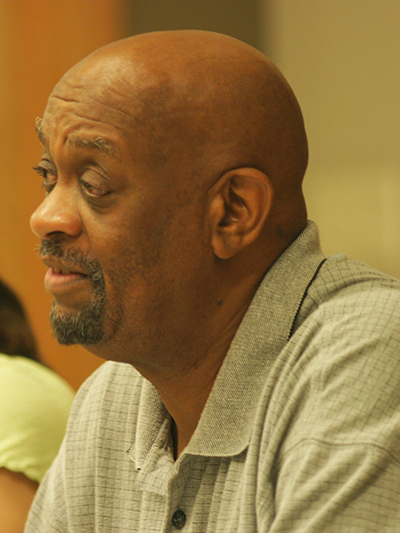
Musa took up the assertions made by many liberals and radicals in the US that racism is on the rise and that most workers who are Caucasian — the majority of striking teachers in West Virginia and Oklahoma, for example — are reactionary. That’s why Donald Trump, not Hillary Clinton, was elected president, they say.
Musa grew up in the deep South under Jim Crow conditions of institutional racial discrimination. He knows the difference between then and now, he said. He pointed to the “social revolution that has taken place in the US,” the product of the mass, Black-led movement in the 1950s, ’60s, and early ’70s that destroyed those institutions of race segregation and profoundly changed the consciousness of working people, both Blacks and Caucasians.
“Today the workforce is more integrated than ever before, and it is harder than at any previous time in US history for the rulers to use racism to divide us,” he said. “That social revolution strengthened us all.”
Plenty of racial discrimination still exists, he underlined. Such divisions are a source of hundreds of billions in profit and will never be eliminated under capitalism. But racism and anti-Black violence are declining, not growing. “Provocations organized by white-supremacist groups, like the one in Charlottesville, Virginia, in August 2017 draw a few hundred, not thousands as they did only decades ago. Vicious mobs are no longer attacking Blacks in the streets and their homes.” One week after the Charlottesville provocation during which one counterdemonstrator was killed, 40,000 people poured into the streets of Boston to repudiate the ultraright action.
Musa pointed to the example of African American football star Colin Kaepernick, who refused to stand during the playing of the national anthem as a protest against police killings and racist attacks. “He became a hero to millions — of all races.”
